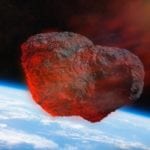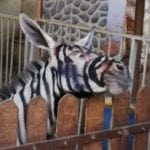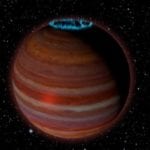 Technology
Technology  Technology
Technology  Misconceptions
Misconceptions 10 Hilarious (and Totally Wrong) Misconceptions About Childbirth
 Weird Stuff
Weird Stuff 10 Warning Labels That Exist Because Someone Actually Tried It
 Health
Health Ten Confounding New Inventions from the World of Biomedicine
 Creepy
Creepy 10 Death Superstitions That Will Give You the Creeps
 Movies and TV
Movies and TV 10 Movies That Get Elite Jobs Right, According to Experts
 Weird Stuff
Weird Stuff 10 Times Real Laws Were Based on Bizarre Hypotheticals
 Animals
Animals 10 Inspiring Tales of Horses Being Human
 Mysteries
Mysteries Top 10 Haunting Facts About the Ghost Ship MV Alta
 History
History 10 Surprising Stories About the Texas Rangers
 Technology
Technology 10 Awesome Upgrades to Common Household Items
 Misconceptions
Misconceptions 10 Hilarious (and Totally Wrong) Misconceptions About Childbirth
 Weird Stuff
Weird Stuff 10 Warning Labels That Exist Because Someone Actually Tried It
Who's Behind Listverse?

Jamie Frater
Head Editor
Jamie founded Listverse due to an insatiable desire to share fascinating, obscure, and bizarre facts. He has been a guest speaker on numerous national radio and television stations and is a five time published author.
More About Us Health
Health Ten Confounding New Inventions from the World of Biomedicine
 Creepy
Creepy 10 Death Superstitions That Will Give You the Creeps
 Movies and TV
Movies and TV 10 Movies That Get Elite Jobs Right, According to Experts
 Weird Stuff
Weird Stuff 10 Times Real Laws Were Based on Bizarre Hypotheticals
 Animals
Animals 10 Inspiring Tales of Horses Being Human
 Mysteries
Mysteries Top 10 Haunting Facts About the Ghost Ship MV Alta
 History
History 10 Surprising Stories About the Texas Rangers
10 Offbeat Stories You Might Have Missed This Week (1/26/19)
Keeping up with all the news in the world can be a difficult task for anyone. That’s why we are here to help with a few weekly lists that look at some of the most notable events that occurred recently. Click here to find out about the crucial stories that made the headlines, or read on to find out about some bizarre and unique tales.
We have a few architectural stories this week about the world’s largest 3-D-printed bridge and an ancient stone circle that wasn’t so ancient. Two World War mysteries get answers, and we explore a budding rivalry between Canada and Norway over which country has the largest moose. In the world of cosmology, we have two new ideas to explore—one is about an alternative to the elusive Planet Nine and the other about the origins of black holes.
10 Enter The Moose Wars
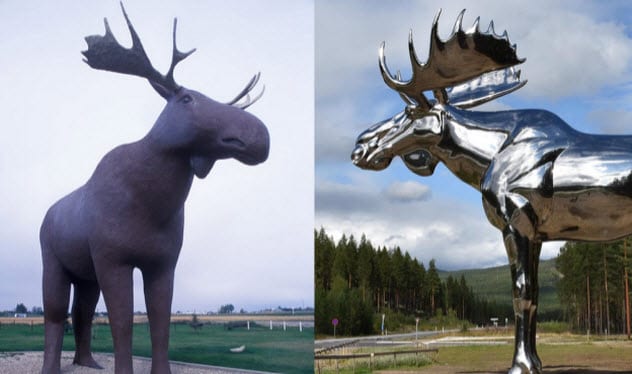
A war is brewing between Canada and Norway over which country has the world’s tallest moose statue.
The city of Moose Jaw in Saskatchewan is home to Mac the Moose, a 9.8-meter-tall (32 ft) sculpture which was the largest moose in the world for over 30 years. It lost that title in 2015 when Norwegians from Stor-Elvdal built Storelgen (“The Big Elk”)—a shiny, stainless steel bull built 30 centimeters (12 in) higher with the express purpose of becoming the new tallest moose in the world.
It seems that the Canadians have had enough. Two comedians, Justin Reves and Greg Moore, have pleaded with the people of Moose Jaw to fight back and reclaim the record. They have set up an online fundraiser in the hopes of raising $50,000 to hire an engineer to increase the size of Mac. They have the support of the city’s mayor, Fraser Tolmie, who revealed that the fight is personal for him as the moose was named after his wife’s great-uncle.[1]
The Scandinavians say there is no chance that they will let this one go. Stor-Elvdal’s deputy mayor, Linda Henriksen, said that they will do whatever they can to ensure that Storelgen keeps the title. They are prepared to double the size of their moose, if need be, but are waiting on the Canadians to act first.
9 The Not-So-Ancient Stone Circle
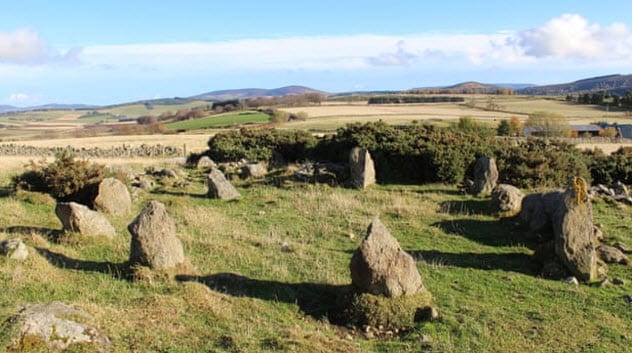
Scottish archaeologists were shocked to find out that an “ancient” stone circle they had been studying was actually built in the 1990s.
The “recumbent stone circle” in Leochel-Cushnie, Aberdeenshire, was hailed as a unique landmark because it was smaller in size than other similar monuments. Archaeologists discovered it on a farm last year and initially believed it to be 3,500–4,500 years old because that is the time period in which most stone circles were built throughout the northeast of Scotland.
Earlier this month, researchers from Historic Environment Scotland received a disheartening call from the former owner of the farm. He told them that the “ancient” monument was just a replica that he built in the mid-1990s.
Aberdeenshire council spokesman Neil Ackerman described the revelation as “disappointing” but still considers the circle a great addition to the local landscape. The modern replica will be included in official records going forward to prevent any future misidentifications.[2]
8 The Shepherding Disk Hypothesis
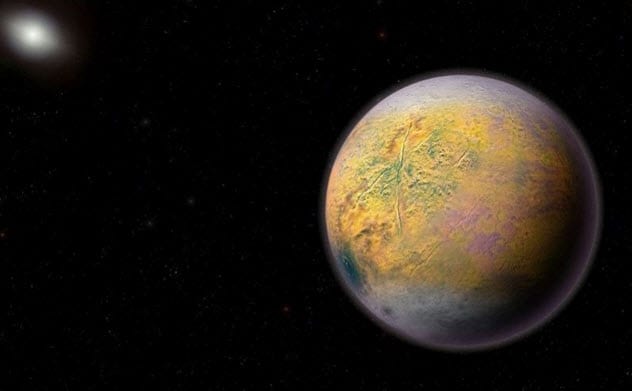
A new study published in The Astronomical Journal proposes an alternative to the mysterious Planet Nine which would account for the bizarre observations made in the Kuiper Belt.
The idea of an undiscovered planet hiding somewhere in the outer solar system appeared when Caltech astronomers discovered icy bodies which were moving together in a doughnut shape as if they were gravitationally tethered to a large object. Later, other researchers found more trans-Neptunian objects (TNOs) with eccentric orbits which showed that there was something interfering with their rotation. Scientists speculated that Planet Nine was responsible.
A team from the University of Cambridge and the American University of Beirut opined that, instead of one giant object, the culprit was a massive ice disk comprised of numerous small bodies spread out over a large area. They call this the “shepherding disk hypothesis” and claim that the collective attractions of all those objects would be enough to interfere with the orbits of other TNOs.[3]
While this is more feasible than an undetected planet, there is yet no observational evidence to support the claim.
7 Like A Prayer

Pope Francis has launched an app which allows Catholics around the world to join him in prayer.
The application is called “Click to Pray” and was launched ahead of World Youth Day 2019. It is currently available in six languages. With the app, users will know exactly when the pope is praying and what he is praying for.[4]
During a demo from an upstairs window of the Apostolic Palace, the pontiff prayed for Colombia and the Mediterranean Sea, referring to a car bomb that claimed the lives of 20 police cadets and shipwrecks that killed hundreds of migrants in the Mediterranean, respectively.
Catholics can check the pope’s profile on “Click to Pray” to find out his intentions and even click on an icon to indicate that they joined him in prayer.
6 Who Was Spandau #7?
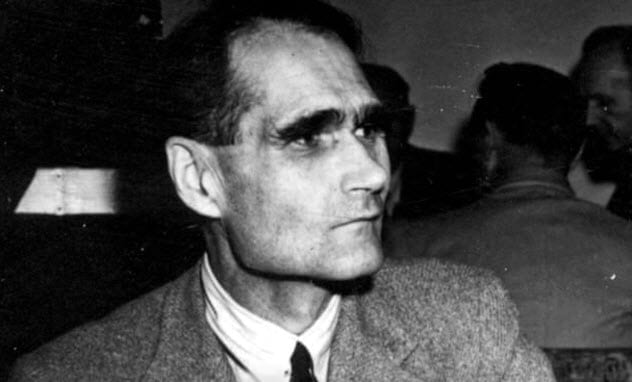
A recent DNA study put to bed an old World War II conspiracy theory which claimed that inmate Spandau #7 was not the real Rudolf Hess but a doppelganger.
One of the leading members of the Nazi Party, Rudolf Hess went to Scotland alone in May 1941. He was arrested, put on trial, and sent to Spandau Prison in 1947. He spent the rest of his life as inmate Spandau #7 until he was found hanged in his cell in 1987.
Some people believe that the prisoner was not the real Hess. They have claimed that there were some physical discrepancies such as the lack of chest scars consistent with his World War I injuries or the lack of a gap in his front teeth.[5]
Spandau #7 also refused to see relatives until 1969 and, at one point, claimed to have amnesia. There were prominent people who believed Hess had been replaced with a look-alike, including his doctor at Spandau and US President Franklin Roosevelt.
This conspiracy seemed destined to remain a mystery. There were no physical remains to analyze. Hess’s body was cremated and his grave site destroyed when it became a pilgrimage for neo-Nazis.
However, scientists found a blood sample taken from the inmate in 1982. It had been placed on a microscope slide and hermetically sealed for decades. They tracked down a male relative of Hess and compared their DNA. There was a 99.99 percent chance that they were related. Spandau #7 was Rudolf Hess.
5 For Whom The Bell Tolls
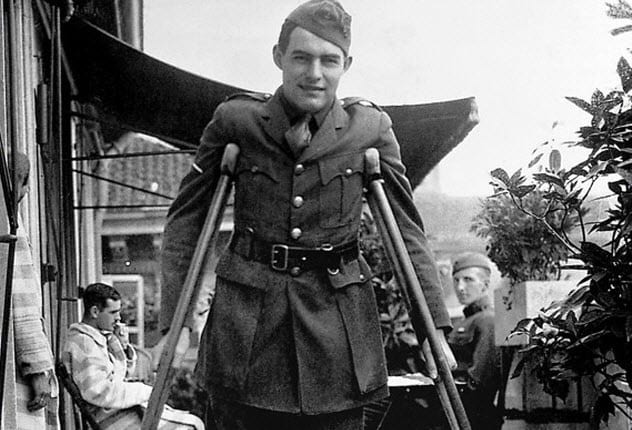
From a solved World War II mystery, we travel further back to World War I. Two historians believe that they have identified the Italian soldier who bore the brunt of a mortar attack and inadvertently saved the life of a young Ernest Hemingway.
An 18-year-old Hemingway was serving as a Red Cross volunteer on the battleground along the Piave River on the Austro-Italian front. He was hit by a mortar shell which gravely wounded the young American. Nevertheless, he survived because most of the impact was taken by an Italian soldier who was standing next to him.
American author James McGrath Morris and Italian historian Marino Perissinotto think they have identified the infantryman through the process of elimination. Eighteen Italian soldiers died that night. Fifteen of them were deployed in different parts of the front. Two of the remaining three were with the 152nd regiment a few kilometers behind the front line. That only left a 26-year-old private from Montalcino named Fedele Temperini.[6]
As further evidence, the two researchers found a military report from an officer at a Red Cross station in the Republic of San Marino. It said that Hemingway was treated alongside an Italian soldier who succumbed to his wounds. The Italian was from the 69th infantry regiment which was Temperini’s unit. The historians are currently lobbying to have Temperini’s name included on a memorial along the Piave River where Hemingway was injured.
4 Monty Strikes Again

Melbourne’s infamous Montague Street Bridge has claimed its first victim of 2019 after 224 days of peace.
The bridge colorfully referred to as “Monty” has a low clearance of just 3 meters (10 ft). Ever since its construction over 100 years ago, it has been the bane of unaware truck drivers who plow into it and get their vehicles stuck under the bridge.
It is hard to say exactly how many collisions have taken place. A website keeps track of how many days have passed since the last crash, but it only goes back to 2016. Even so, it still has 20 entries. That does not count the most recent hit which took place this Tuesday.[7]
In an effort to put an end to these collisions, Victorian traffic authority VicRoads installed height detection gantries on the main approaches to the bridge with black and yellow paddles. If the top of the truck hits the paddles, that means it will also hit Monty.
In total, 26 different warning signs advise drivers of the bridge’s low clearance. Even so, 14 crashes still occurred since the gantries have been installed. But a VicRoads spokesman feels that “stacks of accidents” have been prevented.
Some accidents are more serious than others. Last month, a bus driver received a five-year sentence after crashing a bus into the bridge and severely injuring six passengers.
3 Toilet Snake

Australia is currently experiencing blistering hot weather, and animals are taking refuge wherever they can. One snake sneaked into the toilet of a home in Brisbane and then bit a woman when she sat on the toilet.
Helen Richards was visiting relatives. In the night, she went to the bathroom without turning on the lights and did not see the 1.5-meter (5 ft) carpet python cooling off in the toilet.
As soon as she sat down, Helen felt a “sharp tap” which made her jump off the seat with her pants around her ankles. When she turned around, she saw something which resembled a “longneck turtle receding back into the bowl.”[8]
Fortunately for Helen, the snake was nonvenomous and the bites were relatively harmless. She was fine after being treated with an antiseptic, and the snake was removed by a reptile handler.
2 Bridge Over The Small Canal

The longest 3-D-printed bridge in the world is now open to the people of Shanghai.
The concrete bridge is 26 meters (86 ft) long and was constructed by a team from the Tsinghua University School of Architecture in Beijing entirely using 3-D-printing technology. It is located in Shanghai’s Baoshan District and was modeled on the ancient Zhaozhou (Anji) Bridge, which is the oldest standing bridge in China.
The crossing consists of 112 separate concrete units—44 for the body and 68 for the two flowing sides. It also contains monitoring systems which keep track of the internal stress placed on the bridge in real time. According to designer Professor Xu Weiguo, they were all produced in just 450 hours and cost only a third of what a regular bridge of similar size would cost.[9]
1 Dark Matter Halos Create Black Holes

Given how elusive and mysterious black holes are supposed to be, scientists seem to be discovering new things about these celestial objects every week. This recent finding, however, has the potential to completely rewrite our understanding of the cosmic phenomenon as it suggests that the first massive black holes of the primordial universe were made in halos of dark matter.
The study was published in Nature with backing from NASA, the EU, and the National Science Foundation and is the result of an international effort from researchers from the United States and Ireland. It shows that when galaxies formed very rapidly and very violently, they disrupted the normal formation of stars and triggered the creation of black holes.
This newly discovered mechanism would have been particularly prevalent in halos of dark matter due to their rapid growth. According to one of the paper’s authors, Georgia Tech astrophysics professor John Wise, forming massive black holes requires “being in a rare region with an intense convergence of matter.”[10]
If this new model is correct, then it shifts away from the previously accepted thinking that massive black holes could only appear when exposed to huge levels of radiation powerful enough to inhibit star formation. It also suggests that they are far more common than we previously thought.
Read more offbeat stories you might have missed from January 19, 2019, and
